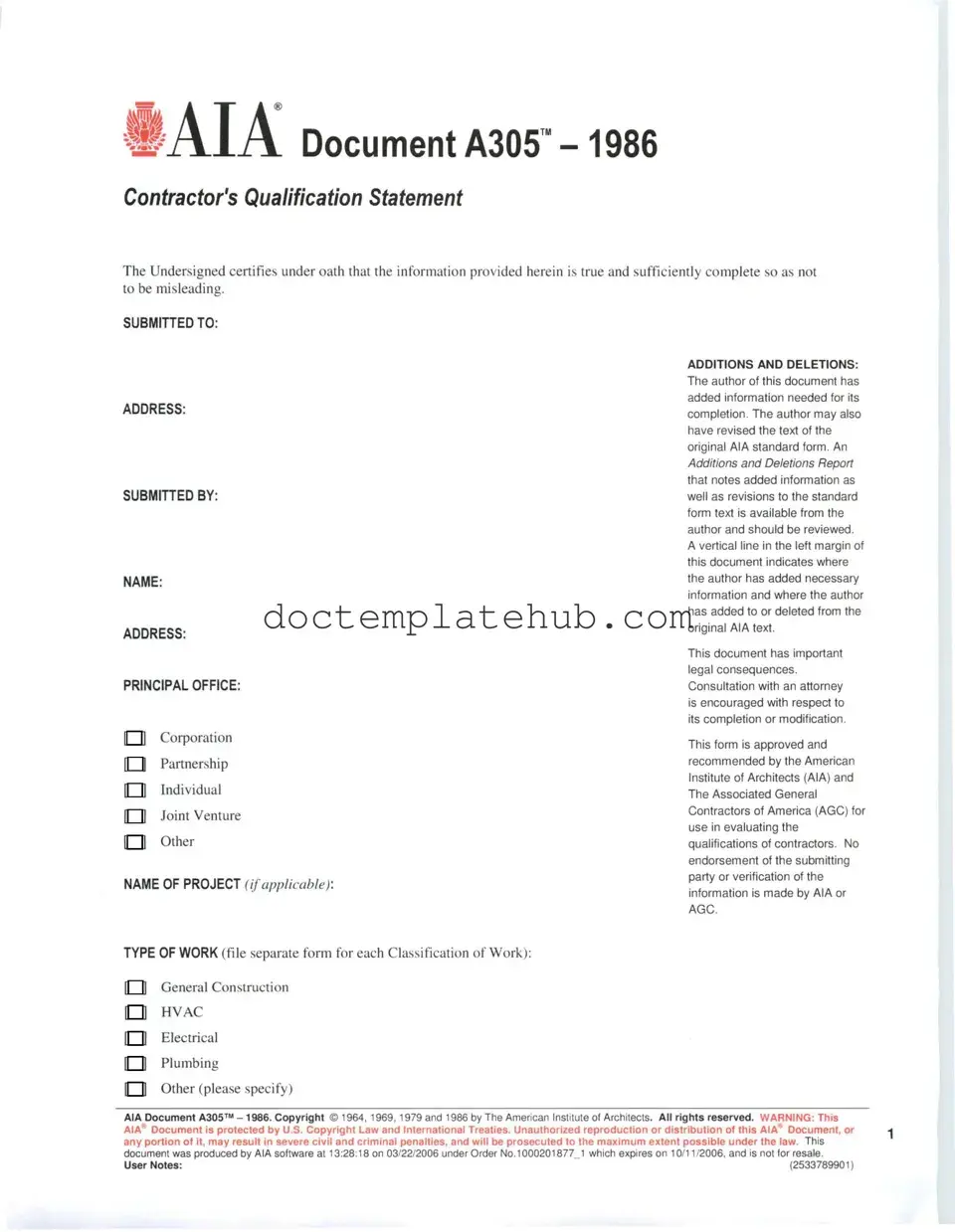What is the AIA A305 form?
The AIA A305 form, also known as the Contractor's Qualification Statement, is a document used primarily in the construction industry. It helps contractors provide information about their qualifications, experience, and financial stability to potential clients or project owners. This form is essential for demonstrating a contractor's capability to undertake a specific project.
Who should use the AIA A305 form?
Primarily, the AIA A305 form is intended for contractors who wish to bid on projects or engage in construction contracts. General contractors, subcontractors, and construction managers can all benefit from using this form to showcase their qualifications and experience to clients.
What information is required on the AIA A305 form?
The AIA A305 form typically requires detailed information about the contractor’s business, including its history, financial status, and relevant project experience. Key sections often include company information, ownership structure, financial data, and a list of completed projects. This comprehensive approach allows clients to assess the contractor's ability to meet project requirements.
Is the AIA A305 form mandatory?
While the AIA A305 form is not legally required, many project owners and general contractors request it as part of their qualification process. Using this form can enhance your credibility and increase your chances of being selected for a project. It serves as a standardized way to present your qualifications.
How can I obtain the AIA A305 form?
The AIA A305 form is available for purchase through the American Institute of Architects (AIA) website. You can download a digital copy or order a printed version. Ensure you are using the most current version to meet industry standards and requirements.
How often should I update my AIA A305 form?
It’s advisable to update your AIA A305 form regularly, especially when there are significant changes in your business, such as new projects completed, changes in financial status, or updates to your company’s structure. Keeping the form current will ensure that potential clients have the most accurate information when evaluating your qualifications.
Can I customize the AIA A305 form?
While the AIA A305 form is a standardized document, you may include additional information or attachments that highlight your qualifications further. However, be cautious not to alter the core content of the form itself, as it is designed to maintain consistency across submissions.
What are the benefits of using the AIA A305 form?
Using the AIA A305 form provides several benefits. It streamlines the qualification process, making it easier for clients to evaluate multiple contractors. The form also helps contractors present their qualifications in a professional manner, which can enhance credibility and trust. Additionally, it can save time during the bidding process, as clients are familiar with the format and content.
What should I do if I have questions about completing the AIA A305 form?
If you have questions while completing the AIA A305 form, consider reaching out to industry professionals or colleagues for guidance. You can also consult resources available through the AIA or seek advice from a legal or financial advisor who specializes in construction. They can provide clarity on any specific requirements or concerns you may have.
